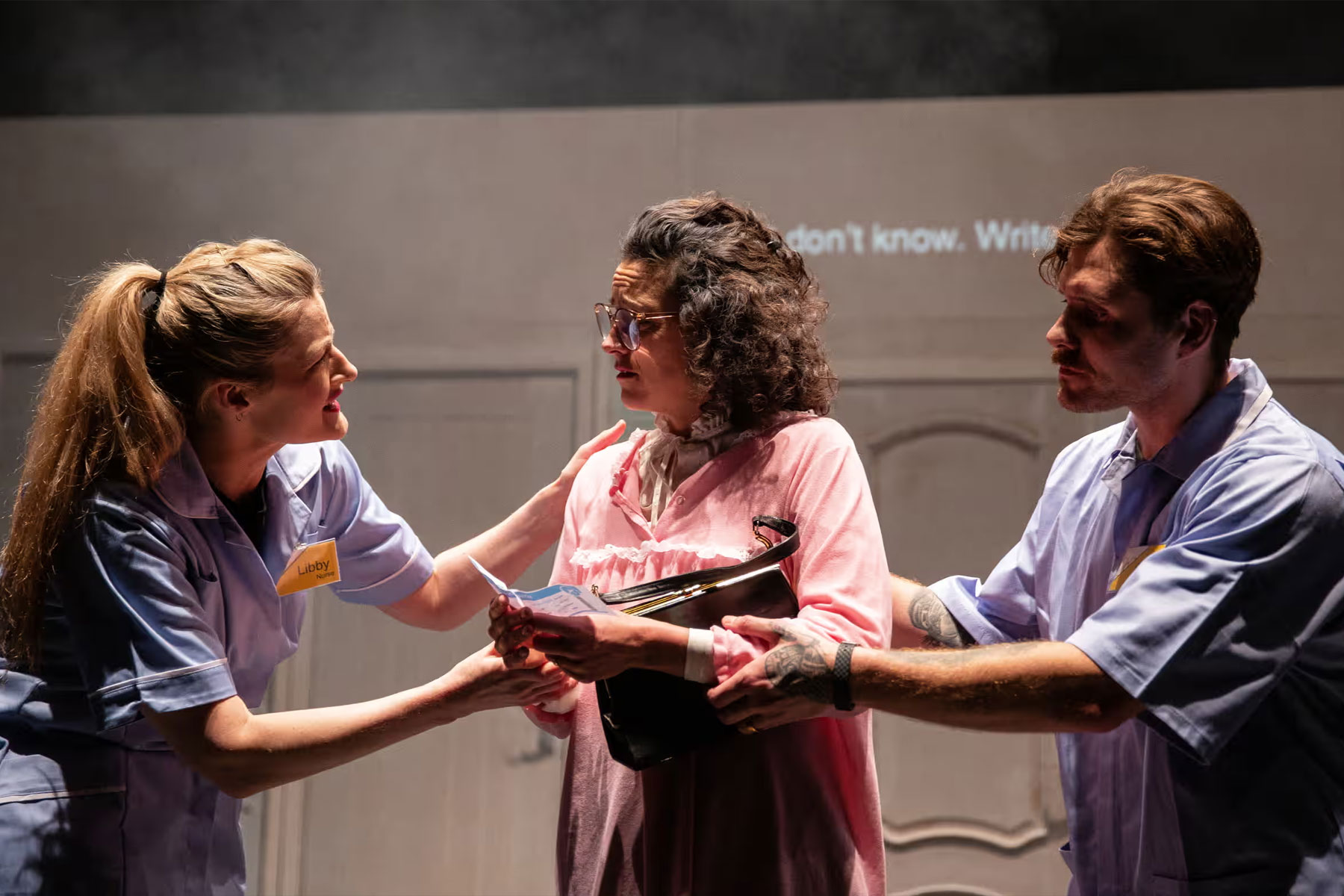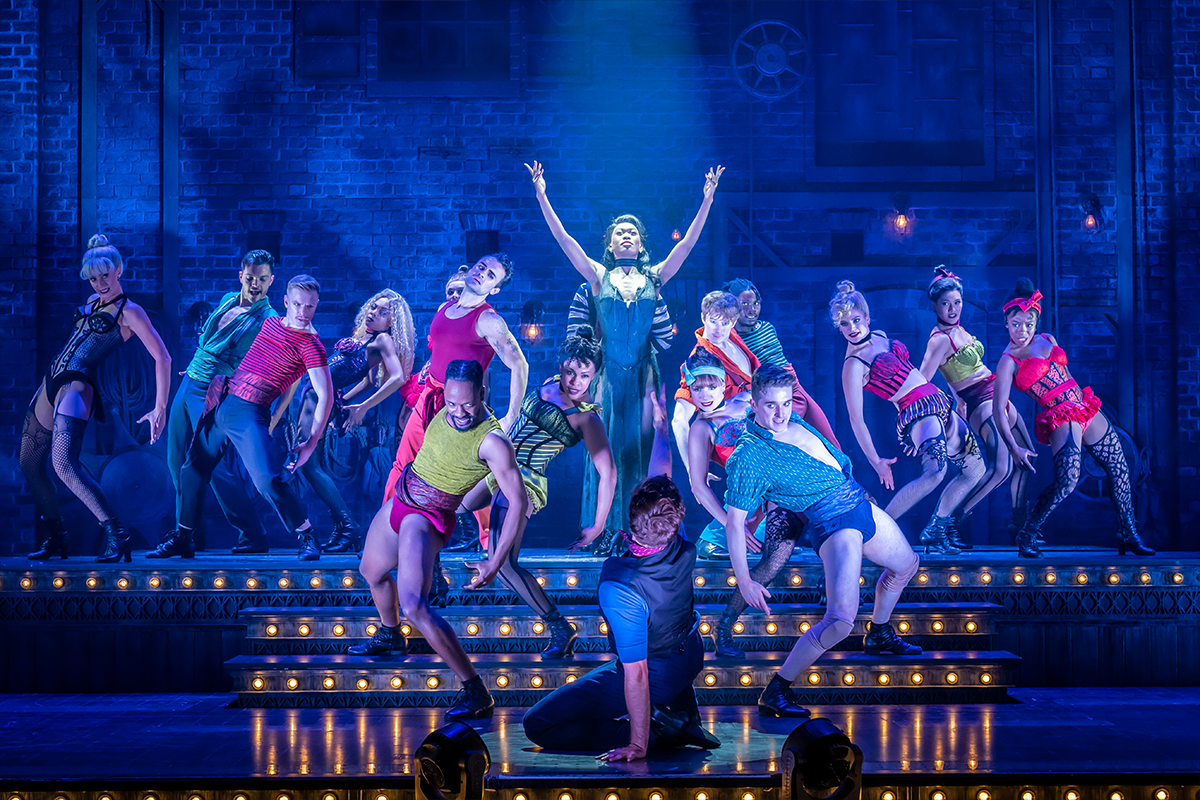He’s Much to Blame (tour – Bury St Edmunds)
Holcroft was a radical writer and publisher at a time – the aftermath of the American revolution and the bitter conflict with revolutionary France – when such pursuits were liable to prosecution for treason, crippling fines, long periods of imprisonment and even the death penalty. This comedy has a satirical bite which lifts it from the apparently standard plot lines of thwarted young love and mercenary elderly interference.
Libby Watson‘s set emphasise this. We’re in a London hotel where the Vibrate family is in temporary abode. Across the width of the stage is a folding screen decorated with satirical prints of the period by Gillray, Cruikshank and Rowlandson. This opens for alternative scenes to reveal a room in long raked perspective, furnished only with chairs and a writing table against the wall. It provides an airy space for Colin Blumenau‘s production to fill.
After a bantering exchange between Lord Vibrate’s much put-upon secretary Thompson (John Cormack) and the German Dr Gosterman who has all the fashionable nostrums in his big black bag (a slightly too exuberant Tim Frances), we met Maria Delaval (en travesti) and her no-nonsense maid Lucy (Katie Bonna). Maria is desperate to retrieve Sir George Versatile, the man who wooed and won her when grateful for her father’s support but reneged on their engagement when he inherited a fortune.
Amy Humphreys balances the comedy of the well-bred girl trying to act the man and the genuine pathos of her all-too feminine emotional turmoil extremely well. Then Maria’s brother arrives, set on exacting vengeance. Delaval is an uptight exemplar of the honour code and Nick Underwood makes him dangerous in his unblinking certainty. We may not like him particularly, for all the rightness of his defence of a blameless sister, but we certainly don’t laugh at him.
Sir George is meanwhile courting Jane, the Vibraites’ daughter, with lavish support from the flighty Lady Vibrate (Maggie O’Brien, all feathers and flutter) and more dithery acquiescence from Lord Vibrate. Paul Greenwood offers in Vibrate a one-man master-class in period comedy, inhabiting the part and not just playing it. The character is a man whose chronic indecision is at once infuriating, understandable and (almost) likeable.
The title character is Sir George himself (Paul Chesterton). At first he seems pliable, flirting with Lady Vibrate, ingratiating himself with Lord Vibrate and wooing Lady Jane (a somewhat subdued Joannah Tincey) with a casual elegance that makes one fear for their subsequent union. Chesterton makes the confrontation with Delaval into a pivotal moment of the drama, subtly finger-posted when Sir George quietly extricates Thompson from a problem caused largely by his employer’s inherent vacillation.
The excellence of the setting and overall direction is not completely matched by the costuming. Such fashionable folk as the Vibrates would surely have been more à la mode than in the wardrobe choices put before us. Blumenau has provided a prologue in authentic rhyming couplets which sets the historical context of the play and Holcroft’s life. Or would, if Tincey had articulated it more clearly. The epilogue is a much more lively affair.










